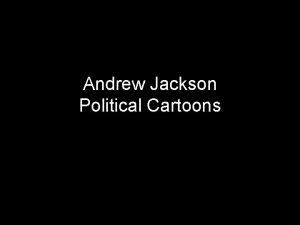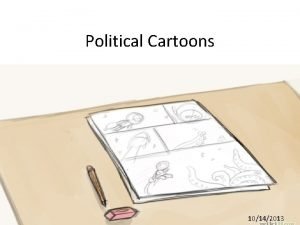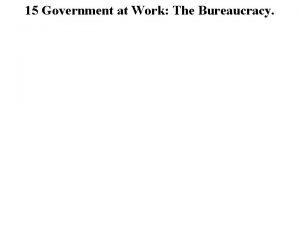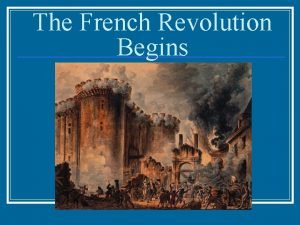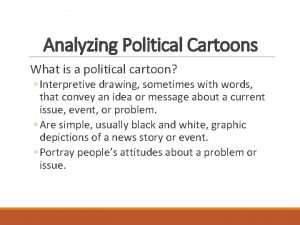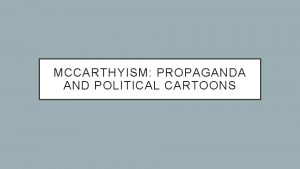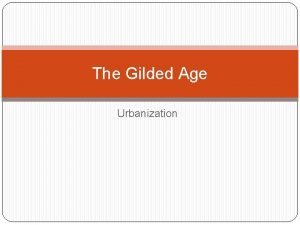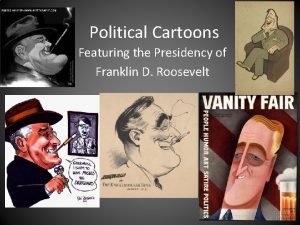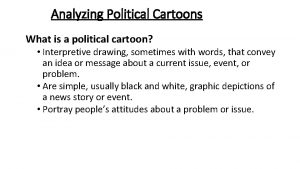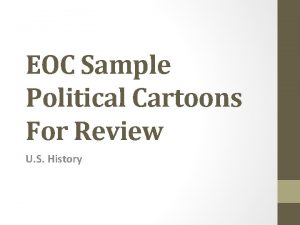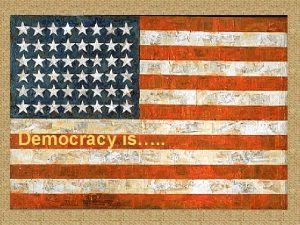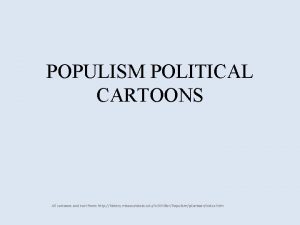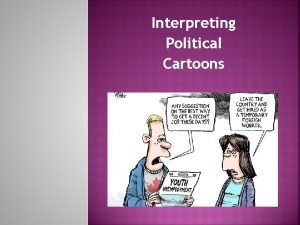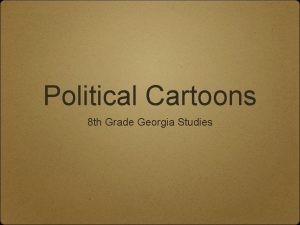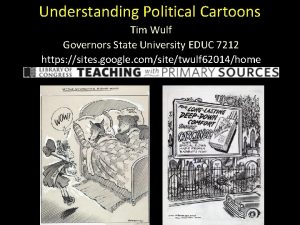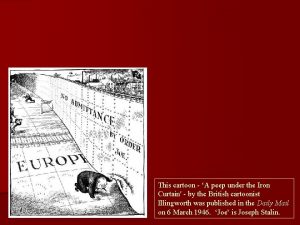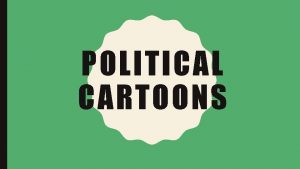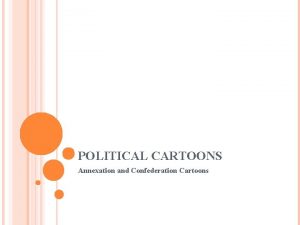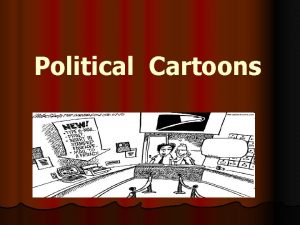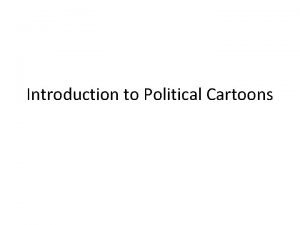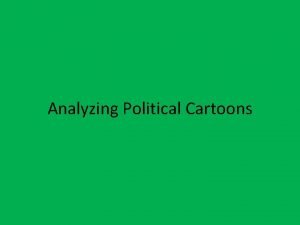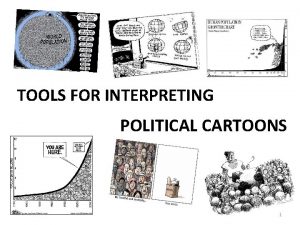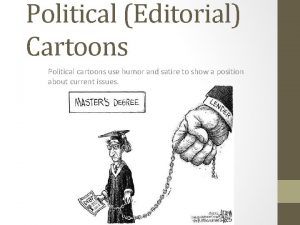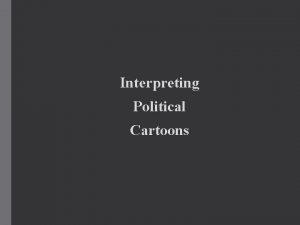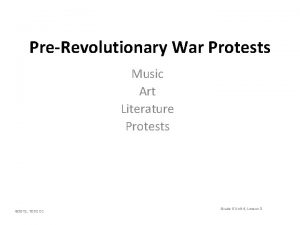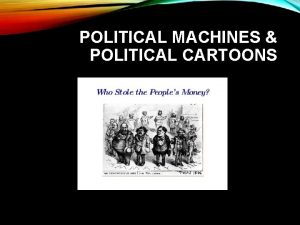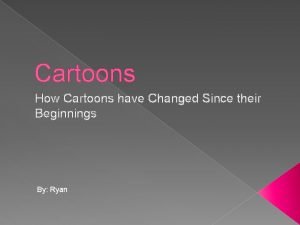Political Cartoons Visual Protests Origins of the political



















- Slides: 19

Political Cartoons Visual Protests

Origins of the political cartoon • Began as caricatures in the time of Leonardo da Vinci (1400 s) • Editorial elements (aka commentary) emerged in the time of Martin Luther (1500 s) where he used ‘political cartoons’ in his pamphlets to rail against the Catholic Church • Makes its way to North America with works by Benjamin Franklin (1750 s)

Lucas Cranach the Elder for Martin Luther

Benjamin Franklin (1754)

The high-point of political cartoons • The 19 th and 20 th century are times of great change in many parts of the world, especially related to politics, therefore political cartoons feature prominently in pamphlets, magazines, and newspapers

Post-Civil War America: “The Cinderella of the Republican Party and her Sister”

WW 1

WW 2

What’s the point of a political cartoon? • Takes serious issues and presents them in a funny way that is more socially acceptable – Doesn’t seem as harsh or critical as an editorial or an article communicating the same message or point of view • Designed to affect the viewer's opinion • Thus appeal and influence are key!

STEPS TO ANALYZE A POLITICAL CARTOON Read pgs 216 -217 in textbook & make notes STEP 1: ESTABLISH A KNOWLEDGE BASE STEP 2: IDENTIFY THE ISSUE STEP 3: DETERMINE DEVICES STEP 4: IDENTIFY BIAS


STEP 1: ESTABLISH A KNOWLEDGE BASE Who is pictured in the cartoon? What aspects do you recognize? What does the caption say? What wording is used in the cartoon?

STEP 2: IDENTIFY THE ISSUE Using info from Step 1 answer the following: What is the subject or message of the cartoon? What particular issue is being identified? What makes you think this? What ‘evidence’ can you provide from the cartoon to support your determination?

STEP 3: DETERMINE DEVICES What stands out to you in the cartoon? What ‘characters’ are in it? How do they look? Remember to consider: • Caricature • Analogy • Symbols • Facial expressions & gestures • Words

STEP 4: IDENTIFY BIAS What is the cartoonist’s point of view? Positive? Negative? (Rarely if ever is a cartoonist neutral!) Remember to consider: • National/regional/local • Political • Racial/ethnic • Economic • Gender • Personal values

"Now mother's all-Canadian boy can go wave his all-Canadian flag while his all. Canadian father reads his all-Canadian magazine, and his all-Canadian mother watches her all-Canadian T. V. , and we develop our all-Canadian culture. . . “ (Leonard Norris, Vancouver Sun, March 23, 1956)

STEP 1: STEP 2: STEP 3: STEP 4:

Who says we don’t have national color and character? (Leonard Norris, Vancouver Sun, Nov. 16, 1956)

STEP 1: STEP 2: STEP 3: STEP 4:
 Political cartoons andrew jackson
Political cartoons andrew jackson Political cartoon analysis
Political cartoon analysis Bureaucracy political cartoons
Bureaucracy political cartoons Globalization political cartoons
Globalization political cartoons French revolution political cartoons explained
French revolution political cartoons explained Dust bowl migration map
Dust bowl migration map Rough sailing ahead political cartoon
Rough sailing ahead political cartoon Political cartoons
Political cartoons What is the message
What is the message Inaugural address
Inaugural address Interpreting a cartoon
Interpreting a cartoon Us history eoc political cartoons
Us history eoc political cartoons Cartoon 1
Cartoon 1 Stock market political cartoon
Stock market political cartoon Populism political cartoons
Populism political cartoons Persuasive techniques in political cartoons
Persuasive techniques in political cartoons Interpreting cartoon
Interpreting cartoon Political cartoons
Political cartoons Political cartoons
Political cartoons A peep under the iron curtain analysis
A peep under the iron curtain analysis
